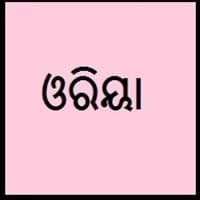Cebuano vs Oriya
Countries
Philippines
India
National Language
Philippines
India
Second Language
Philippines
Not spoken in any of the countries
Speaking Continents
Asia
Asia
Minority Language
Not spoken in any of the countries
Not spoken in any of the countries
Regulated By
Visayan Academy of Arts and Letters
Not Available
Interesting Facts
- About one-fifth of the population of the philippines speak cebuano and are second largest ethnolinguistic group in the country.
- Cebuano contains many words of Spanish origin.
- The earliest literature in Oriya was traced in 7th to 9th centuries.
- Since Odia is having a long literary history and has not borrowed largely from other languages, it is the 6th classical language in India.
Similar To
Hiligaynon Language
Bengali and Assamese
Derived From
Island of Cebu
Sanskrit Language
Alphabets in
Cebuano-Alphabets.jpg#200
Oriya-Alphabets.jpg#200
Scripts
Latin
Bengali, Odia alphabet (Brahmic)
Writing Direction
Not Available
Left-To-Right, Horizontal
Hello
Hoy
ନମସ୍କାର (namascara)
Thank You
Salamat
ଧନ୍ୟବାଦ୍ (dhanyabaad)
How Are You?
Kumusta man ka?
କେମିତି ଅତ୍ଚନ୍ଥି? (kemiti achanti?)
Good Night
Maayong Gabii
ସୁଭରାତ୍ର (shubharaatra)
Good Evening
Maayong Gabii
ସୁଭସନ୍ଧ୍ୟା (subha sandhya)
Good Afternoon
Maayong Hapon
ସୁଭ ଖରା ବେଳ (shubha kharaa bela)
Good Morning
Maayong Buntag
ସୁପ୍ରଭାତ (suprabhaata)
Please
Palihug
Not Available
Sorry
Ikasubo ko
ମୁଁ ଦୁଃଖିତ (mū duḥkhita)
Bye
Babay
ସୁବିଦାୟ (shubidaaya)
I Love You
Gihigugma ko ikaw
ମୁଁ ତୁମକୁ ଭଲ ପାଏ (mu tumoku bhala paye)
Excuse Me
Ekskyus mi
କ୍ଷମା କରିବେ (kyamā karibe)
Dialect 1
Boholano
Baleswari
Where They Speak
Bohol
India
Dialect 2
Southern Kana
Ganjami
Where They Speak
southern Leyte
India
Dialect 3
North Kana
Kosli
Where They Speak
northern part of Leyte
India
How Many People Speak
Not Available
How Many People Speak?
Not Available
Second Language Speakers
Not Available
Native Name
Visayan
ଓଡ଼ିଆ (ōṛiyā)
Alternative Names
Binisaya, Bisayan, Sebuano, Sugbuanon, Sugbuhanon, Visayan
Odisha, Odri, Odrum, Oliya, Uriya, Utkali, Vadiya, Yudhia
French Name
cebuano
oriya
German Name
Cebuano
Oriya-Sprache
Pronunciation
Not Available
[ˈoɽia]
Ethnicity
Cebuano people
Odias
Language Family
Austronesian Family
Indo-European Family
Subgroup
Not Available
Indo-Iranian
Branch
Not Available
Indic
Early Forms
No early forms
No early forms
Standard Forms
Standard Cebuano
Standard Odia
Signed Forms
Not Available
Indian Signing System
Scope
Individual
Individual, Macrolanguage
ISO 639 1
No data Available
or
ISO 639 6
Not Available
Not Available
Glottocode
cebu1242
macr1269
Linguasphere
No data Available
No data available
Language Type
Living
Living
Language Linguistic Typology
Verb-Subject-Object
Subject-Object-Verb
Language Morphological Typology
Not Available
Not Available
Cebuano and Oriya Language History
Comparison of Cebuano vs Oriya language history gives us differences between origin of Cebuano and Oriya language. History of Cebuano language states that this language originated in 16th century whereas history of Oriya language states that this language originated in 3 BC. Family of the language also forms a part of history of that language. More on language families of these languages can be found out on Cebuano and Oriya Language History.
Cebuano and Oriya Greetings
People around the world use different languages to interact with each other. Even if we cannot communicate fluently in any language, it will always be beneficial to know about some of the common greetings or phrases from that language. This is where Cebuano and Oriya greetings helps you to understand basic phrases in Cebuano and Oriya language. Cebuano word for "Hello" is Hoy or Oriya word for "Thank You" is ଧନ୍ୟବାଦ୍ (dhanyabaad). Find more of such common Cebuano Greetings and Oriya Greetings. These greetings will help you to be more confident when conversing with natives that speak these languages.
Cebuano vs Oriya Difficulty
The Cebuano vs Oriya difficulty level basically depends on the number of Cebuano Alphabets and Oriya Alphabets. Also the number of vowels and consonants in the language plays an important role in deciding the difficulty level of that language. The important points to be considered when we compare Cebuano and Oriya are the origin, speaking countries, language family, different greetings, speaking population of these languages. Want to know in Cebuano and Oriya, which language is harder to learn? Time required to learn Cebuano is 3 weeks while to learn Oriya time required is 44 weeks.





